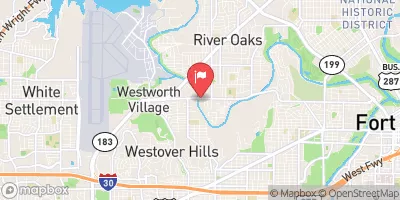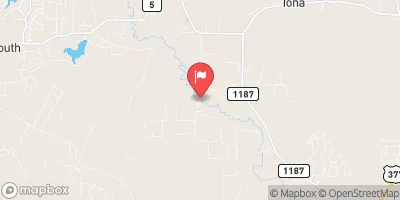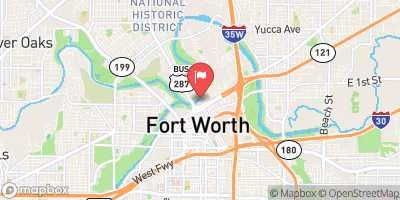Benbrook Lk Nr Benbrook Reservoir Report
Last Updated: January 6, 2026
Benbrook Lake is a reservoir located on the Clear Fork of the Trinity River in Texas, USA.
°F
°F
mph
Wind
%
Humidity
Summary
The lake was created in 1952 by the U.S. Army Corps of Engineers to provide flood control, water supply, and recreation. The hydrology of Benbrook Lake is primarily fed by the Clear Fork of the Trinity River, which is also the main surface flow provider. In addition, during the winter season, snowpack provides significant runoff that contributes to the lake's hydrology. The lake serves as a vital source of water supply for the city of Fort Worth and other surrounding areas. Agriculture activities are minimal around the lake, while recreational uses include boating, fishing, camping, hiking, and bird-watching. Overall, Benbrook Lake plays a crucial role in providing various benefits to the region.
Reservoir Details
| Lake Or Reservoir Water Surface Elevation Above Ngvd 1929, Ft 24hr Change | 0.01% |
| Percent of Normal | 100% |
| Minimum |
675.91 ft
2011-10-09 |
| Maximum |
710.76 ft
2015-06-25 |
| Average | 691 ft |
| Dam_Height | 130 |
| Hydraulic_Height | 124 |
| Drainage_Area | 429 |
| Year_Completed | 1951 |
| Nid_Storage | 410000 |
| Hazard_Potential | High |
| Structural_Height | 134 |
| River_Or_Stream | CLEAR FORK OF TRINITY RIVER |
| Foundations | Rock |
| Surface_Area | 3770 |
| Outlet_Gates | Uncontrolled - 0 |
| Dam_Length | 9130 |
| Primary_Dam_Type | Earth |
| Nid_Height | 134 |
Seasonal Comparison
Wind Speed, Mph Levels
Wind Direction, Degrees Clockwise From North Levels
Precipitation, Total, In Levels
Lake Or Reservoir Water Surface Elevation Above Ngvd 1929, Ft Levels
Weather Forecast
Nearby Streamflow Levels
Dam Data Reference
Condition Assessment
SatisfactoryNo existing or potential dam safety deficiencies are recognized. Acceptable performance is expected under all loading conditions (static, hydrologic, seismic) in accordance with the minimum applicable state or federal regulatory criteria or tolerable risk guidelines.
Fair
No existing dam safety deficiencies are recognized for normal operating conditions. Rare or extreme hydrologic and/or seismic events may result in a dam safety deficiency. Risk may be in the range to take further action. Note: Rare or extreme event is defined by the regulatory agency based on their minimum
Poor A dam safety deficiency is recognized for normal operating conditions which may realistically occur. Remedial action is necessary. POOR may also be used when uncertainties exist as to critical analysis parameters which identify a potential dam safety deficiency. Investigations and studies are necessary.
Unsatisfactory
A dam safety deficiency is recognized that requires immediate or emergency remedial action for problem resolution.
Not Rated
The dam has not been inspected, is not under state or federal jurisdiction, or has been inspected but, for whatever reason, has not been rated.
Not Available
Dams for which the condition assessment is restricted to approved government users.
Hazard Potential Classification
HighDams assigned the high hazard potential classification are those where failure or mis-operation will probably cause loss of human life.
Significant
Dams assigned the significant hazard potential classification are those dams where failure or mis-operation results in no probable loss of human life but can cause economic loss, environment damage, disruption of lifeline facilities, or impact other concerns. Significant hazard potential classification dams are often located in predominantly rural or agricultural areas but could be in areas with population and significant infrastructure.
Low
Dams assigned the low hazard potential classification are those where failure or mis-operation results in no probable loss of human life and low economic and/or environmental losses. Losses are principally limited to the owner's property.
Undetermined
Dams for which a downstream hazard potential has not been designated or is not provided.
Not Available
Dams for which the downstream hazard potential is restricted to approved government users.







 Benbrook Dam
Benbrook Dam
 Benbrook Lk Nr Benbrook
Benbrook Lk Nr Benbrook
 Lk Worth Abv Ft Worth
Lk Worth Abv Ft Worth